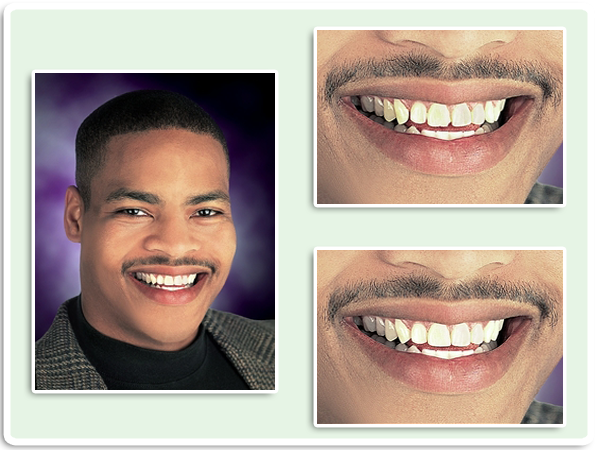Today’s Modern Veneers
Veneers are ultra-thin shells of ceramic or resin material that are bonded to the fronts or backs of the teeth, much in the same way that artificial fingernails are attached to the fingers. The only requirement is that the teeth be structurally sound.
Lumineers are a special type of contact lens thin veneers that require minimal to no tooth drilling. They can be prepared without any anesthetics or temporaries and are comfortable and highly aesthetic in appearance. Consult Dr. Daftary to see whether Lumineers are the right choice to enhance your smile.
Veneers are used to correct cosmetic defects on teeth or to correct the bite (the way the teeth come together). Cosmetic imperfections that can be corrected with veneers include teeth that are slightly crooked or stained. There may be gaps or chips or the teeth may be uneven. In the past, the only way to correct these or other imperfections was to cover the tooth with a full crown.
The advantage of veneers over crowns is that the teeth don’t require extensive shaping prior to the procedure. Some teeth may require minimum to no drilling at all for veneer preparation. This means that little or no anesthetic is required. However, some teeth will require more extensive shaping prior to receiving veneers.
Veneers made from porcelain or resin look natural. Porcelain veneers resist stains from coffee, tea or smoking better than resin veneers. On the other hand, resin veneers may be able to be made thinner and require less tooth structure to be removed before they are applied. The decision to use resin or porcelain should be made on an individual basis.
Veneers usually require two to three dental visits: for consultation, preparation of the tooth and placement of the veneers.
Smile Mock-Up
Want a smile make-over but are unsure how it will make you look? Let’s show you some before & after results of your smile without actually proceeding with the treatment. With some basic plaster molds of your teeth and a lab make-over on the mold, we could transfer this to your teeth and let you have a glance of what an actual smile make-over would do for you.
How It’s Done
During your first visit, Dr. Daftary will examine your teeth to make sure veneers are appropriate for you. She will thoroughly explain what the procedure will involve and some of the limitations.
At the second visit, Dr. Daftary may need to remove some tooth enamel to accommodate the thickness of the veneers. An impression of the teeth is taken next, which will be sent to one of the nation’s best dental laboratories for cosmetic procedures. The laboratory manufactures the veneers to fit your teeth. It usually takes one or two weeks for the veneers to be made. A temporary veneer may be applied during this time.
The final porcelain veneers will be applied during the third visit. Dr. Daftary will apply them temporarily with water or glycerin first, so she can check the fit and color and you can see what they will look like. If the color is not quite right, the color of the veneers or the cement can be adjusted. Sometimes the veneers will need to be sent back to the laboratory to get the ideal shade.
Once you’re satisfied with the shape & color of the veneers, Dr. Daftary will clean your teeth thoroughly and cement the veneers with bonding agents, which are hardened with a blue light.
Follow-Up
It can take time for you to get used to the appearance and feel of your new teeth, but most patients are instantly thrilled and happy about their enhanced smile. You can continue with your oral hygiene routine of brushing and flossing and eating regular food. However, you should be careful not to bite your nails, chew on pencils, ice or other hard objects, or otherwise put unnecessary pressure directly on the veneers. For long-term protection of the veneers, it is always advisable to use a night guard to prevent stress related fractures in the veneers. Dallas’ Dr. Daftary will probably ask you to come back in a few weeks so that she can check the veneers for any such condition.








 My husband and I love Prestonwood Dental. I already wrote a review for Dr. Daftary, and realized I should write one for her practice as well, because she and her entire team are brilliant
My husband and I love Prestonwood Dental. I already wrote a review for Dr. Daftary, and realized I should write one for her practice as well, because she and her entire team are brilliant









